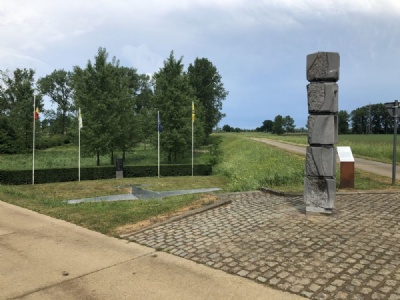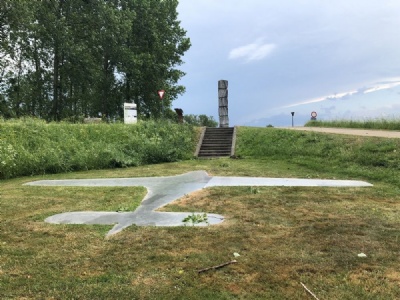Maasmechelen
On January 10, 1940, a German Messerschmitt Bf 108 crashed in a field outside Maasmechelen in eastern Belgium and near the Dutch border. On the plane were the pilots Erich Hoenmanns and Helmuth Reinberger who were both majors in rank in the German air force. During the flight there was fog that caused the pilot losing orientation and forced to make an emergency landing. Belgium was neutral at the time and the crash landing would probably have been unproblematic had it not been because Reinberger had brought secret documents with details for the intended invasion of Western Europe that was scheduled for january 17.
The pilot was unaware of this and Reinberger was not supposed to carry documents of such confidentiality in case of they would into enemy hands. When it became clear to both of them what could happen if the documents were seized, they tried to destroy the documents but without success. Both were captured by the Belgian military and the partially destroyed documents were recovered.
The German attack on Western Europe was called, Case Yellow, and had been postponed several times since the autumn of 1939 due to bad weather. The extent to which the crash landing led to the fact that the Germans once again postponed the invasion is not determinable. Belgium expressed doubts about the authenticity of the documents and suspected that they could be part of a misleading manoeuvre. Other discussions that arose as a result were that the Germans were forced to make extensive changes to the original plans and therefore there are still discussions to what extent these documents affected Case Yellow in its entirety.
Current status: Monument (2022).
Location: 50°58' 22.49" N 05°42' 56.89" E
Get there: Car.
Follow up in books: Jackson, Julian: The Fall of France: The Nazi Invasion of 1940 (2003).



This I must say is one of the strangest monuments I have visited, perhaps not for its design but more for what it is dedicated to. A German crashed plane with documents that perhaps had something to do with the German attack plans against Western Europe. Documents examined by the Belgian army without being able to establish its authenticity. Documents which did not, however, cause the Germans to alter their plans that it actually became in favour for the Belgians. In the end, Germany invaded and occupied most of Western Europe in May/June 1940. So what is the purpose of this monument?